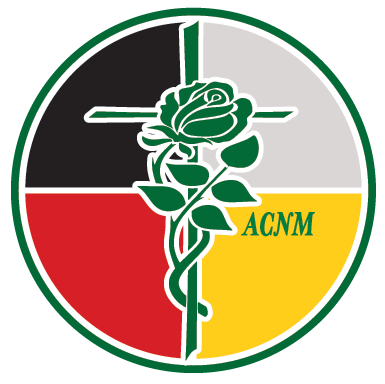Sprouting Potatoes and Chlorpropham
By
Anthony B. James DNM(C), ND(T), MD(AM), RAC, DOM(Ac.),DPHC(h.c.), SMOKH
Sprouting Potatoes and Chlorpropham (with or with out the additive) shows the difference between Organic and Non-Organic vegetables. Here at the SCNM: ThaiYogaCenter we emphasize the importance of eating whole, fresh, local, organic and non-GMO vegetables as part of a happy and disease free life strategy. Nature Cure and Natural Medicine health strategies demand this. We stress the importance of each of the positive attributes we want to see in our food to promote maximum possible wellness.
It’s great to find simple resources which demonstrate the importance of this in a clear manner.
I ran across this amazing video and want everyone to really consider the ramifications of contaminants and adulterations to our food and how they must have internal consequences. Most of the chemicals used have not been tested either properly nor exhaustively as this is NOT required by the FDA. The FDA essentially allows the companies making and using these harmful substances to “Self-Regulate”. Self regulation is essentially the wolf guarding the hen house when it comes to our food safety.
Toxic Agent or Additive: Chlorpropham
Chlorpropham (commercial names: Bud Nip, Taterpex) is a plant growth regulator and herbicide used as a sprout suppressant for grass weeds, alfalfa, lima and snap beans, blueberries, cane berries, carrots, cranberries, ladino clover, garlic, seed grass, onions, spinach, sugar beets, tomatoes, safflower, soybeans, gladioli and woody nursery stock. It is also used to inhibit potato sprouting and for sucker control in tobacco. Chlorpropham is available in emulsifiable concentrate and liquid formulations. (Source: http://en.wikipedia.org/wiki/Chlorpropham)
Research has shown that Chlorpropham is harmful to humans.
According to the National Library of Medicine: Toxicology Data Network (Source: http://toxnet.nlm.nih.gov/cgi-bin/sis/search/a?dbs+hsdb:@term+@DOCNO+981)
Evidence for Carcinogenicity:
Cancer Classification: Group E Evidence of Non-carcinogenicity for Humans
[USEPA Office of Pesticide Programs, Health Effects Division, Science Information Management Branch: "Chemicals Evaluated for Carcinogenic Potential" (April 2006)] **QC REVIEWED**
Classification of carcinogenicity: 1) evidence in humans: No adequate data. 2) evidence in animals: Inadequate data. Overall summary evaluation of carcinogenic risk to humans is Group 3: The agent is not classifiable as to its carcinogenicity to humans. /From table/
[IARC. Monographs on the Evaluation of the Carcinogenic Risk of Chemicals to Man. Geneva: World Health Organization, International Agency for Research on Cancer, 1972-PRESENT. (Multivolume work). Available at: http://monographs.iarc.fr/index.php p. S7 60 (1987)] **PEER REVIEWED**
Skin, Eye and Respiratory Irritations:
Mild irritant.
[Morgan, D.P. Recognition and Management of Pesticide Poisonings. EPA 540/9-80-005. Washington, DC: U.S. Government Printing Office, Jan. 1982., p. 83] **PEER REVIEWED**
Carbamates produce slight to moderate skin and eye irritation, depending on the vehicle used, duration of contact, and on whether the substance is applied to the abraided or intact skin. From the available data, it cannot be excluded that some of the carbamates will have a slight to moderate sensitization potential. /Carbamate Pesticides/
[WHO; Environ Health Criteria 64: Carbamate pesticides (1986). Available from, as of July 3,2003: http://www.inchem.org/pages/ehc.html **PEER REVIEWED**
Chlorpropham is potentially a Cancer causing additive. Of course the mechanism for why it might cause cancer is not well researched or understood at this time. Suffice to say if you either currently have cancer and or have ANY risk factors for cancer then you should not consume this substance at all!
Chlorprpham appears to be an inflammatory agent causing hystimine abreactions and contact dermatitus. This is also an inflammatory response. If it causes or triggers skin and eye irritation on contact imagine what it can do with ingestion and or aspiration. Aspiration can occur during food processing as tiny bits are aerosolized while being chopped or juiced for example. The reports I surveyed did not clearly indicate whether cooking, frying, drying denatured the chemical. This means we should also question and investigate derivative products made from Chlorpropham contaminated vegetables such as alfalfa sprouts, lima beans, snap beans, blueberries, cane berries, carrots, cranberries, garlic, onions, spinach, sugar beets, tomatoes, safflower oil, soybeans, potatoes and tobacco products.
The only way to avoid contamination with the widely used food additive Chlorpropham as well as any other of the many potentially harmful chemicals used in commercial food production is to avoid them or if not possible eat as little as possible and infrequently as toxicity levels to trigger adverse reactions are not clearly established. Eat only whole, fresh, local, organic and non-GMO whenever and wherever possible. Let this video and article on sprouting potatoes and Chlorpropham be a wake up call for discernment and better food choices for you and your friends, family and wellness clients.
This article about Sprouting Potatoes and Chlorpropham is presented solely as an opinion for educational purposes and is not intended as a substitute for competent medical advise regarding any medical condition. Please see your physician or competent medical professional when considering any treatment for any disease.


